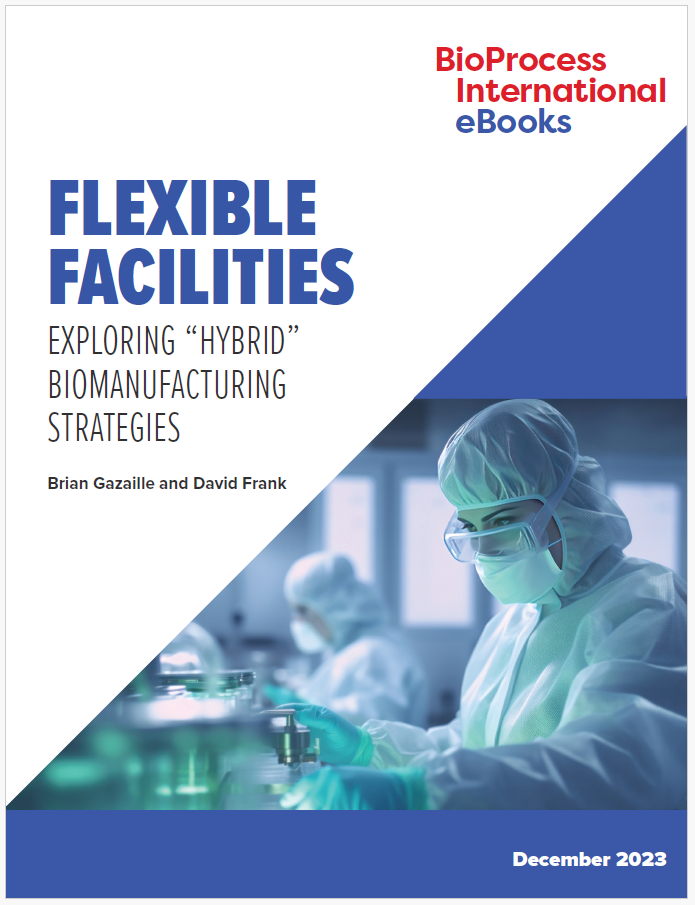eBook: Flexible Facilities — Exploring Hybrid Biomanufacturing Strategies
December 15, 2023
Flexibility is a primary consideration in today’s biopharmaceutical industry. Drug companies must develop and ultimately manufacture increasing numbers of therapies, many of which treat indications with smaller patient populations than those addressed by “blockbuster” drugs. For such reasons, facilities outfitted with fixed, large-volume stainless-steel equipment are becoming less conducive to meeting current and projected business goals. Single-use technologies would seem to provide added flexibility, although the goal of implementing fully single-use operations remains impractical for many facilities. Hence, companies are seeking out strategies for leveraging both equipment formats to increase manufacturing and operational flexibility. In some cases, companies also are deciding between building their own flexible manufacturing capacity and outsourcing production to third parties — and both strategies offer different kinds of flexibility.
This eBook explores two strategies for enhancing biomanufacturing flexibility. In the first chapter, BPI’s managing editor writes about hybrid biomanufacturing, in which practitioners deliberately implement both single- and multiuse technologies within the same manufacturing area or process train. Transcending the industry’s canonical single-use–stainless-steel debate, the approach seeks to reap the benefits of both equipment formats, especially when doing so can reduce requirements for time- and resource-intensive cleaning processes. Next, David Frank of Azzur Group explores how some biotechnology start-ups are leveraging licensable cleanroom spaces for production of candidate cell therapies. The model could enable developers to access bioproduction capacity and maintain control over their processes and intellectual property without needing to build in-house manufacturing capabilities or outsource key activities. Together, both eBook chapters illustrate how biopharmaceutical companies are establishing blended alternatives to traditional manufacturing models.

You May Also Like





